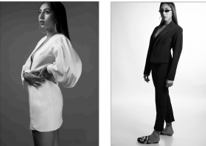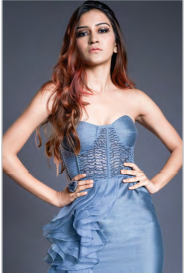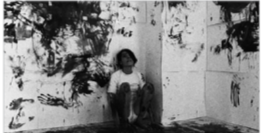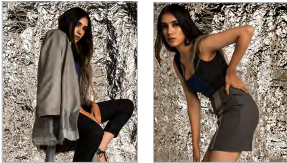Years of Indian fashion can not be weaved into a few words – the ethnicity, elegance, and grandeur belonging to each era captured by artisans and designers. The tweaking-turning evolution of the same is what charms the curious minds. Here we present an overview of the history and evolution of India’s booming fashion industry.
India’s textile industry is one of the largest capital goods contributors to the economy. Indian fashion is known for its cultural and classic touch of traditions and ethnicity. The evolution of fashion in India cannot be ignored as it soars through the heights of international platforms even today.

Traditional patterns and designs on aesthetically pleasing fabrics such as Chikhan and Zardosi are seen with a touch of western on some of the biggest runway platforms in the world. Indian fashion, through the years, has been known specifically for its intricate designs and attention to detail. This is evident in the works of some of the leading designer brands of the country like Sabya Sachi, Manish Malhotra, Anita Dongre, and many others.
There have been some drastic and subtle changes that the Indian fashion industry has gone through. Let’s go back to where it all began.
The Origin
The Indus Valley Civilization is where it all seems to have started. Records of some of the very first traditional Indian clothing were found during the Indus Valley Civilization (AKA the Bronze Age of Civilization) that lasted from 3300 BCE to 1300 BCE.
Did you know?

The very first record of the draping of a saree-style fabric was found in the Mauryan Empire (322 BCE – 187 BCE) art. The sculptures of the time are seen draped in sarees along with some detailed jewelry carvings.
Indian Textile VS Indian Fashion
The Indian textile industry was booming far before the fashion industry even began to take its initial steps. Silk and cotton exports had started in India long before the era of colonization. India had discovered the secret to making silk around 300CE from the Chinese. A lot of places throughout India became the centers for weaving silk. These were predominantly places like Cochin, Gujarat, Varanasi, Delhi, etc. Silk was known for its softness and luxurious feel which quickly became popular among the royals of the country.

With the rise of the Mughal Empire began the introduction of intricate details and prints on silk. However, fashion was a luxury reserved only for the rich. Along with beautiful silk pieces, the rich wore accessories, jewelry, lehengas, and sherwanis with embellishments by the best of the professionals.
Indian Fashion during Colonialism
The East India Company brought with it the Anglo fashion of skirts, trousers, and blouses. These styles were enforced upon the employees of the British while they served as clerks in their offices. The upper classes slowly then began adapting these European styles.

Fashion was a privilege afforded only by the richest of the country until the Indian colonization. Something worth mentioning is the impact of the caste system on Indian fashion history. Fashion followed the occupation of the people and the practicality of the clothing. For instance, the poor farmworkers and clerks wore dhotis and cotton sarees; for soldiers or warriors the clothing was armor. Clothing was a symbol of caste, class systems, and diverse roles divided amongst the society.
This cotton clothing was often made by hand and woven by the people themselves. The need or requirement for fashionable clothing was not seen among the common folks of the country.
However, fashion at this time was forced upon most middle-class Indians, and hence it did not flourish as an industry even in the colonial era. Poverty and oppression played a huge role in this.
Indian Fashion: Post Independence
Decades after the Indian independence, the economy still seemed to be in the torturous grip of the negative impact of colonialism. The country was still struggling economically, which once again caused fashion to take a back seat. The urban and educated population of the country, however, preferred western clothing and kept European fashion alive to a certain extent.
The true rise of the Indian Fashion industry started only after the partition and the stable economy of the country came into play. A development in inter-state trade, in turn, led to the development of Indo-Western fashion.
The Bollywood Turn
The impact of Bollywood has been the greatest on the Indian Fashion Industry. As color cinema became popular in the 1950s, people began to be greatly influenced by the fashion sense of Bollywood stars. Movies were inspired by its culture and to a certain extent, even the British.
-
The 1940s to 1960s
People looked up to actors like Dilip Kumar and Dev Anand and actresses such as Madhubala and Nargis Datt to seek inspiration for their fashion choices. The drawback of the Indian fashion industry was that the industry was largely disorganized, clothing styles were limited due to the rarity of bazaars and brands available for the common folk.
-
The 1980s to 1990s
The 1980s and 1990s of the Bollywood era did impressive work in making fashion even more popular among the masses. The style of superstars like Amitabh Bacchan, Jackie Shroff, Zeenat Aman spoke volumes about their personalities and once again people sought inspiration from these celebrities.
Many trends of the 1970s were also at par with European fashion with the introduction of denim and bell bottoms and even activewear.
-
The Economic Rise of the 1980s
For the first time in the history of the Indian fashion industry, homegrown brands came into the mainstream. Brands like Park Avenue, Lakme, Louis Phillipe became popular among the Indian audience.
It was finally in the 1980s when fashion designing became a viable profession for Indians. Amongst a few of the first fashion designers of India were the esteemed names of Abu Jani, Sandeep Khosla and Tarun Tahilani whose designs are still loved by their audience. Other brands also started coming forward which gave rise to competition in the fashion industry. Soon, international brands were also expanding to India, and boutiques were now prominent and more welcoming to the younger crowd.
The education in fashion was first provided by NIFT. The past two decades have seen more growth in fashion than any other, and movies such as Maine Pyaar Kyun Kiya became popular for the styling and clothing choice of its actors.
-
The 1990s to 2000s
As more and more people started watching TV, fashion became more common among all Indian households. Exposure to fashion magazines also proved to be extremely beneficial for the fashion industry of India. Some of the popular designers of the time are Manish Malhotra and Rohit Bal, with their works still being largely recognized and appreciated.
This era was greatly influenced by international beauty standards as Sushmita Sen and Aishwarya Rai won beauty pageants. Traveling abroad also became more common leading to a growing influence of western trends in fashion.
In the 2000s, there was easy access to the internet and a rise in disposable income for women. As more women became independent, they could afford to spend a larger amount on fashion and beauty products. More international brands such as Louis Vuitton and H&M had now also started expanding the base to India.
-
The 2010s to 2020s
The digital innovations, modifications, and a growing economy allowed more and more people that had smartphones to shop easily and more conveniently. E-Commerce became popular and more people purchase things online now than ever before.
The fashion industry of India has seen many volatile changes in recent decades. The digital era has made all fashion available at the click of a button. Fashion is now easy and accessible. However, brands must keep in mind the ever-changing needs of their customers, especially where Indians are seen prioritizing quality over everything in clothing lately.
Want to know more about the rise of fashion in India?
Pursue ISDI’s Fashion Designing Program and indulge in a seamless experience, transcending over timeless fashion design history and tools of evolution.
Join ISDI – School of Design and Innovation. Our world-class curriculum has been created in collaboration with Parsons School of Design, New York. We offer a 4-year UG program in Fashion Design that prepares students for rewarding careers in fashion. We also have a comprehensive 11-month postgraduate course on Fashion Business Management, for those who want to start their own venture.









